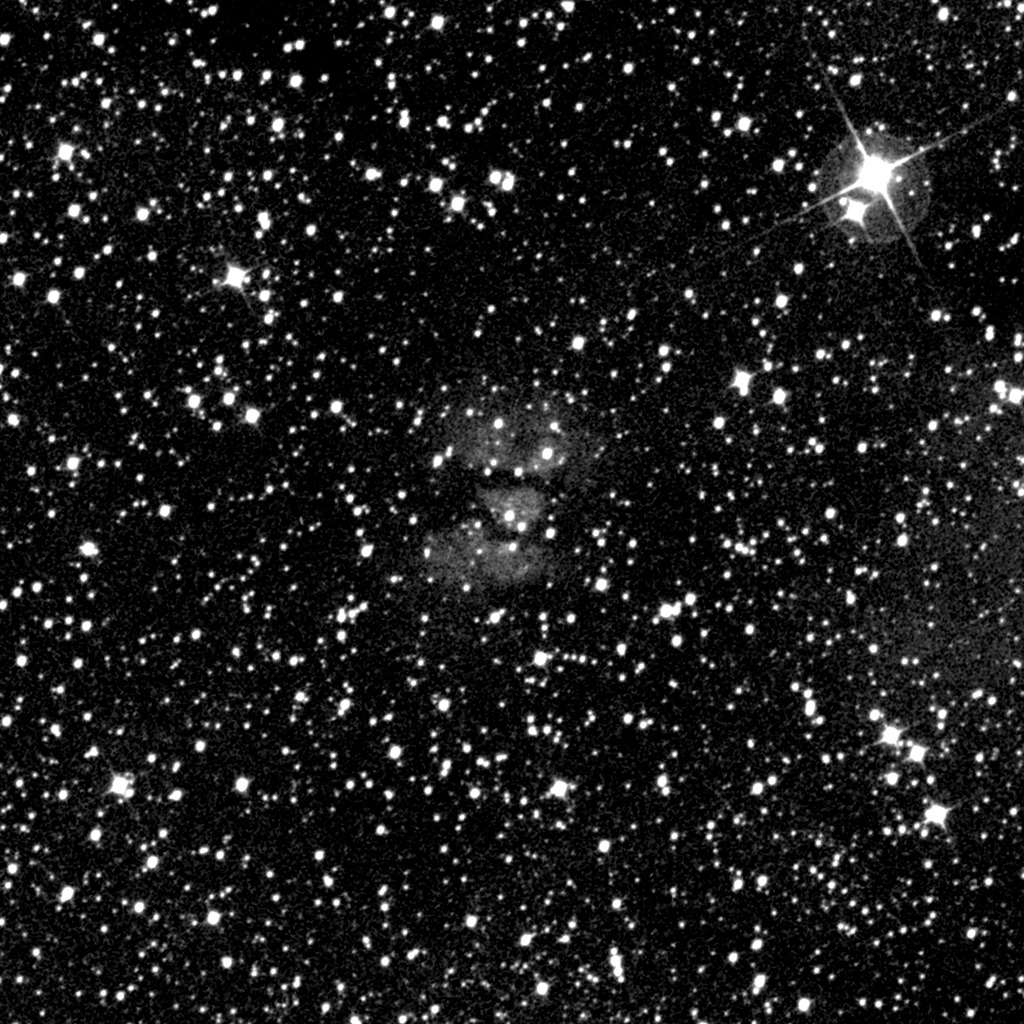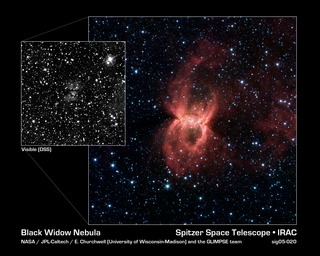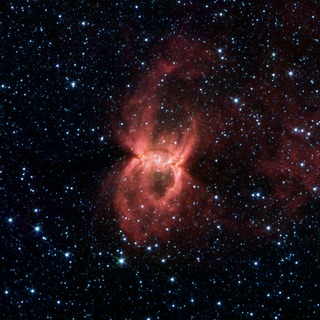
Credit: DSS
Observation • October 28th, 2005 • sig05-020b
sig05-020b
In the constellation Circinus, this visible-light observations by the Digital Sky Survey reveals only a faint hourglass-shaped patch of obscuring dust and gas. In the infrared, NASA's Spitzer Space Telescope's dust-piercing eyes see a big "Black Widow Nebula" teeming with clusters of massive young stars.
When individual stars form from molecular clouds of gas and dust they produce intense radiation and very strong particle winds. Both the radiation and the stellar winds blow the dust outward from the star creating a cavity or, bubble.
In the case of the Black Widow Nebula, astronomers suspect that a large cloud of gas and dust condensed to create multiple clusters of massive star formation. The combined winds from these groups of large stars probably blew out bubbles into the direction of least resistance, forming a double bubble.
About the Object
- Name
- Black Widow Nebula
- Type
- Nebula > Type > Star Formation
- Distance
- 10,000 Light Years
Color Mapping
| Band | Wavelength | Telescope |
| Optical | 700 nm | DSS |
Astrometrics
- Position (J2000)
- RA =15h 3m 33.4s
- Dec = -57° 40' 3.6"
- Field of View
- 0.0 x 0.0 arcminutes
- Orientation
- North is 209.1° left of vertical






